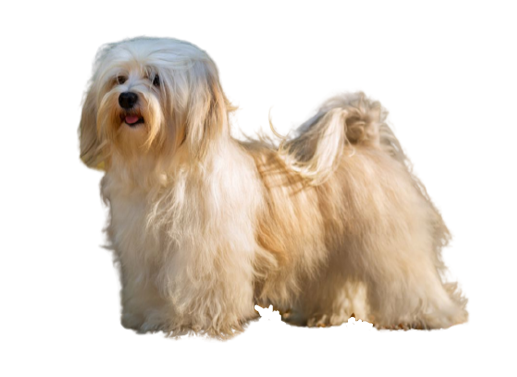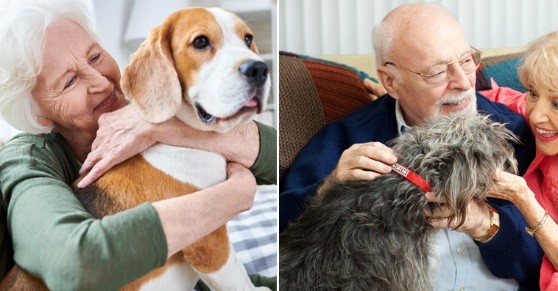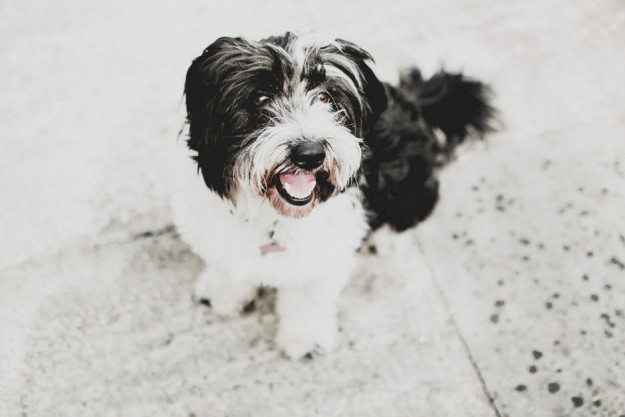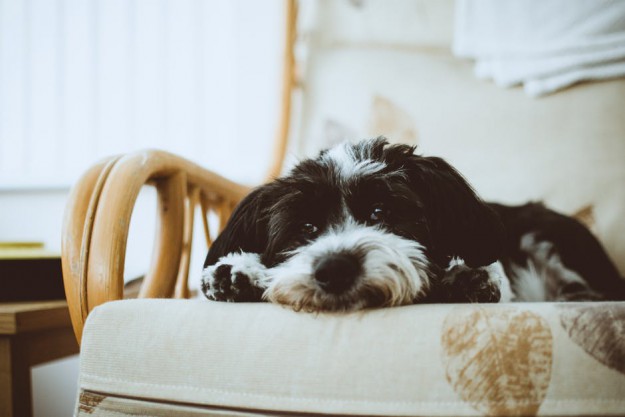
Havanese
USD $900-$1200 Price Avg.
Companion Dogs
Group
Purebred
Breed Type
Small
Size
14-16 years
Lifespan
Breed Information
| Group | Companion Dogs |
|---|---|
| Popularity/Rank | 23 |
| Origin | Cuba |
| Other Names | Bichon Habanero, Bichon Havanais, Bichon Havanese, Bichon Havanês, Havanese Cuban Bichon, Havaneser, Havanezer |
| Breed Type | Purebred |
| Price (Avg.) |
USD $900-$1200
How much does it cost to purchase a Havanese? The price of a Havanese will vary from breeder to breeder as well as from place to place. As a rough guide, you should expect to pay between $900 to $1200 per Havanese if you purchase from a reputable breeder. Prices will be higher for show-quality dogs with a distinguished pedigree. Adult dogs who have already been trained may cost even more. It is usually less expensive to adopt a Havanese through a shelter. |
| Size | Small |
| Weight | 7-13 pounds (3-6 kg) |
| Height | 8-11 inches (21-29 cm) |
| Lifespan | 14-16 years |
| Recognized by |
AKC, FCI
The American Kennel Club in 1996 as a Toy breed. And FCI in the Companion and Toy Dogs group, in the Bichons and related breeds section. |
| Purpose | Lapdog |
| Date of Origin | 1700s |
| Ancestry | Bichon Tenerife, Blanquito de le Habana |
Appearance & Maintenance
| Coat | Flat, Long, Soft, Wavy, Woolly |
|---|---|
| Coat Colors | Black, Fawn, Havana Brown, Reddish-Brown, Tobacco, White |
| Grooming Level | |
| Shedding Level | |
| Eye Color Possibilities | Brown |
| Nose Color Possibilities | Black, Brown |
| Coat Color Possibilities | Black, Blue, Brindle, Brown, Cream, Fawn, Red, Sable, Silver |
| Coat Length | Large |
| Coat Density | Dense |
| Coat Texture | Wavy |
| Recommended Brushes | Clipper, Comb, Nail Clipper, Slicker Brush |
| Brushing Frequency | Daily |
Breed Characteristics
| Temperament | Affectionate, Amiable, Caring, Charming, Companionable, Delicate, Gentle, Intelligent, Lively, Playful, Respondent, Responsive, Sportive, Sturdy |
|---|---|
| Intelligent | |
| Trainability | |
| Playfulness | |
| Sensitivity Level | |
| Affection Level | |
| Social Interaction Required | |
| Barking | |
| Watchdog Ability | |
| Territorial | |
| Biting Force | Low |
| Mouthiness | |
| Impulse to Wander or Roam | |
| Prey Drive | |
| Adaptability | |
| Tolerates Being Left Alone | |
| Fighting Dog | Not really |
Good & Friendly with
| Apartment Life Friendly | |
|---|---|
| Stranger Friendly | |
| Kid-Friendly | |
| Cat Friendly | |
| Dog Friendly | |
| Office Friendly | No |
| Senior Citizens Friendly | |
| Pet Friendly | |
| Friendly with First Time Owners | No |
| Service Dog | Not really |
| Therapy Dog | Not really |
| Detection, Sniffer or Security Dog | Not really |
| Search and Rescue Dog (SAR) | Not really |
| Boat Dog | Not really |
| Cart Pulling or Drafting Dog | Not really |
Health Elements
| Health Issues | |
|---|---|
| Health Problems | Cataracts, Chondrodysplasia, Deafness, Elbow Dysplasia, Heart Murmurs, Hip Dysplasia, Legg-perthes Disease, Mitral Valve Disease, Patellar Luxation, Portosystemic Liver Shunt |
| Hypoallergenic | Yes |
| Energy Level | |
| Exercise Required | |
| Sleeping Required | |
| Weight Gain Potential | |
| Weather & Climate | Tolerates warm and cold weather. |
| Stinkiness | Low |
| Drooling tendency | |
| Activity Level | High |
| Rec. Walk Mileage Per Week | 7 miles |
| Minutes of Activity Per Day | 60 minutes |
Food & Costing
| Avg. Daily Food | 1/2 to 1 cup dry food a day. |
|---|---|
| Cups Per Day | 1.2 cups |
| Daily Cost | $1.00 - $1.25 |
| Monthly Cost | $30.00 - $37.50 |
Reproducibility
| Gestation Duration | 60-64 days |
|---|---|
| How often can the Havanese have a litter? | Once a year. |
| Litter Size | 1-9 puppies, average 4 (Once a year.) |
Description
The Havanese is a small, fluffy, and friendly dog breed that originated in Cuba. They are known for their intelligence and loyalty, making them an ideal companion for families. The Havanese is a popular choice for those looking for a small but lively pet.
Appearance: The Havanese has a long, silky coat that can come in many colors including white, cream, black, silver, chocolate brown and sable. They have large eyes and floppy ears that hang down close to the face. Their tail is usually curled over their back or held up high when they are excited or alert.
Lifespan: The average lifespan of the Havanese is between 12-15 years with proper care and nutrition.
Size: The size of the Havanese varies depending on gender; males typically reach heights of 8-11 inches while females reach heights of 7-10 inches at the shoulder.
Weight: The weight range of the Havanese is 7-13 pounds depending on gender and size.
Colors: As mentioned above, the coat color of the Havanese can vary from white to black with many shades in between such as cream, silver, chocolate brown and sable.
Personality: The personality of the Havanese is one of intelligence and loyalty; they are very affectionate towards their owners but also independent enough to explore on their own when given permission to do so. They are also known for being quite vocal which can be both endearing and annoying depending on your preference!
Friendliness with other dogs/animals/children: Generally speaking, the Havanese gets along well with other animals as long as they have been properly socialized from an early age; however it’s important to remember that each individual dog may have different preferences when it comes to interacting with other animals or children so it’s best to introduce them slowly in order to ensure everyone gets along safely!
Temperament: The temperament of the Havanese is generally described as gentle yet playful; they love spending time with their owners but also enjoy exploring new places when given permission by their owners! They tend to be quite active indoors so having plenty of toys available will help keep them entertained throughout the day!
Health: Generally speaking, this breed does not suffer from any major health issues although some individuals may be prone to certain conditions such as hip dysplasia or patellar luxation (dislocation). It’s important that you take your pet for regular checkups at your local vet in order to ensure they remain healthy throughout their life span!
Adaptability level & Benefits as pets: This breed adapts well both indoors and outdoors although they prefer living inside due to their need for companionship; this makes them ideal pets for those who live in apartments or smaller homes since they don’t require much space! Additionally due to their intelligence level these dogs make great companions who will learn quickly if trained properly – making them perfect family pets who will bring joy into any home!
History
The Havanese is a small, playful breed of dog that is native to Cuba. The breed is named after the capital city of Havana, where they were first bred. The Havanese was once the national dog of Cuba and was very popular among the Cuban aristocracy. However, the Cuban Revolution in 1959 led to the decline of the breed, as many of the wealthy families who owned them fled the country. The Havanese nearly became extinct, but was saved by a few dedicated breeders who brought them to the United States and other countries. Today, the Havanese is one of the most popular breeds in America and is recognized by major kennel clubs around the world.
The Havanese is believed to be descended from two other small breeds of dogs: the Bichon Frise and the Maltese. These two breeds were brought to Cuba by traders from Italy and Spain in the 1500s. The Havanese is thought to have developed from a cross between these two breeds, although there is no definitive evidence of this. The Havanese was first recognized as a distinct breed in Cuba in 1874. In 1979, the American Kennel Club (AKC) recognized the Havanese as a member of its Toy Group.
The Havanese is a small dog with a long, silky coat that can be either straight or wavy. The coat comes in a variety of colors, including white, black, cream, gold, silver, blue, brown, and red. The Havanese has large dark eyes and floppy ears that are covered with long hair. They are known for their friendly personalities and their love of playfulness and attention.
The Havanese is an intelligent breed that is easy to train. They are good at learning tricks and are often used in obedience competitions. They are also known for being good watchdogs, as they will bark at strangers or strange noises. However, their small size means that they are not suitable for guarding duties.
The Havanese is generally healthy breed with few health problems. However, like all dogs they can be susceptible to certain conditions such as hip dysplasia or patellar luxation (a dislocation of the kneecap). They can also suffer from allergies or skin problems due to their long coats if they are not properly groomed








